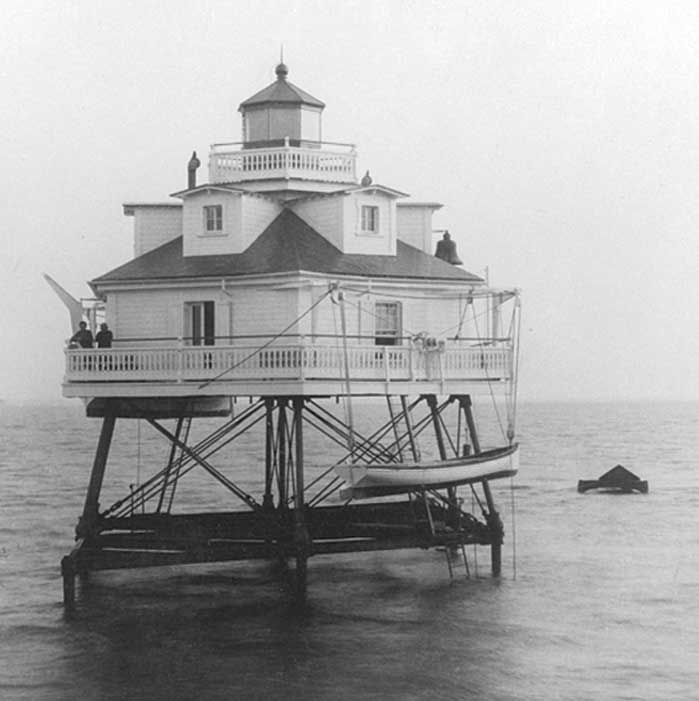In 1823, William Bedford Barney, a Naval officer serving as a federal representative at the booming port of Baltimore, wrote to Washington about the situation just south of Annapolis where shipping was all-too-frequently disrupted by a poorly marked, hard-packed shoal reaching more than a mile from shore and into the busy shipping lanes.

“Many ship owners and seafaring men of respectability have frequently spoken to me on the subject of a light to be placed at the end of Thomas Point bar... A light placed here, would be of as great utility as perhaps any one in the Chesapeake Bay.”
Barney’s reasonable request for a light at the end of the shoal was considered but bypassed. Concerned with budgets and limited by available technology, the federal government assigned a first-time lighthouse builder to construct a 30-foot-tall stone tower on the edge of the point itself. Completed in 1825, the structure stood more than a mile from the deep water. Its light was soon obscured by growing trees, and its foundation perilously close to the eroding shoreline. Just 13 years later the tower was rebuilt with the same stones at a higher, more inland position. The second attempt also proved inadequate and it, too, was soon threatened by the advancing Bay.
By 1874, with Baltimore still booming, technology had advanced to finally allow a less-expensive, more easily built lighthouse at the end of the shoal. The state of Maryland transferred ownership of a speck of Bay bottom to the federal government and upon the spot, over the course of 1875, the current Thomas Point Shoal Lighthouse was constructed. The octagonal cottage at the end of the shoal was lit on November 28, 1875, named to the National Register of Historic Places in 1975, and automated in 1986.
By the turn of the 21st century Thomas Point Shoal Lighthouse had outlived it practicality as an active, federally owned station and was declared “excess to the needs of the United States of America.” In 2004 ownership of the lighthouse was transferred to the City of Annapolis. The city, simultaneously, entered a long-term agreement with the U.S. Lighthouse Society who assumed operational and financial responsibility for the lighthouse. The society’s efforts have been augmented by wholehearted support of the Annapolis Maritime Museum whose leaders and volunteers have been deeply involved in day-to-day operations at the lighthouse as well as education and fundraising efforts ashore.
Thomas Point Shoal Lighthouse has seen more than 50,000 high tides and countless storms. It has outlasted 27 presidents and witnessed 25,000 sunsets. 2025 will bring the 150th anniversary of its lighting. But the beloved lighthouse remains needy. Keeping the historic structure sound and its story alive is a major effort, underpinned by a dedicated group of volunteers and requiring a constant flow of funds.
Of immediate concern are the steel supports below the cottage itself, some of which currently display shocking levels of deterioration. A major construction project at the lighthouse, including addressing the supports, gets underway this fall at the lighthouse.
About the Author: Dave Gendell is the co-founder of SpinSheet and PropTalk Magazines. He lives in Annapolis with his family and is working on a Thomas Point book project, scheduled for release in 2020.